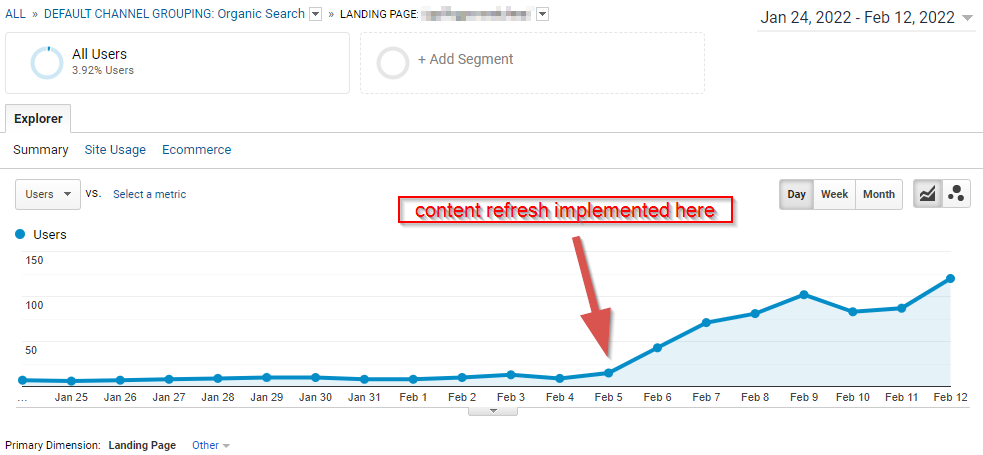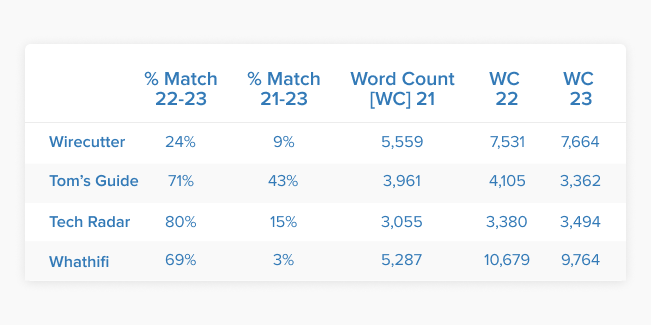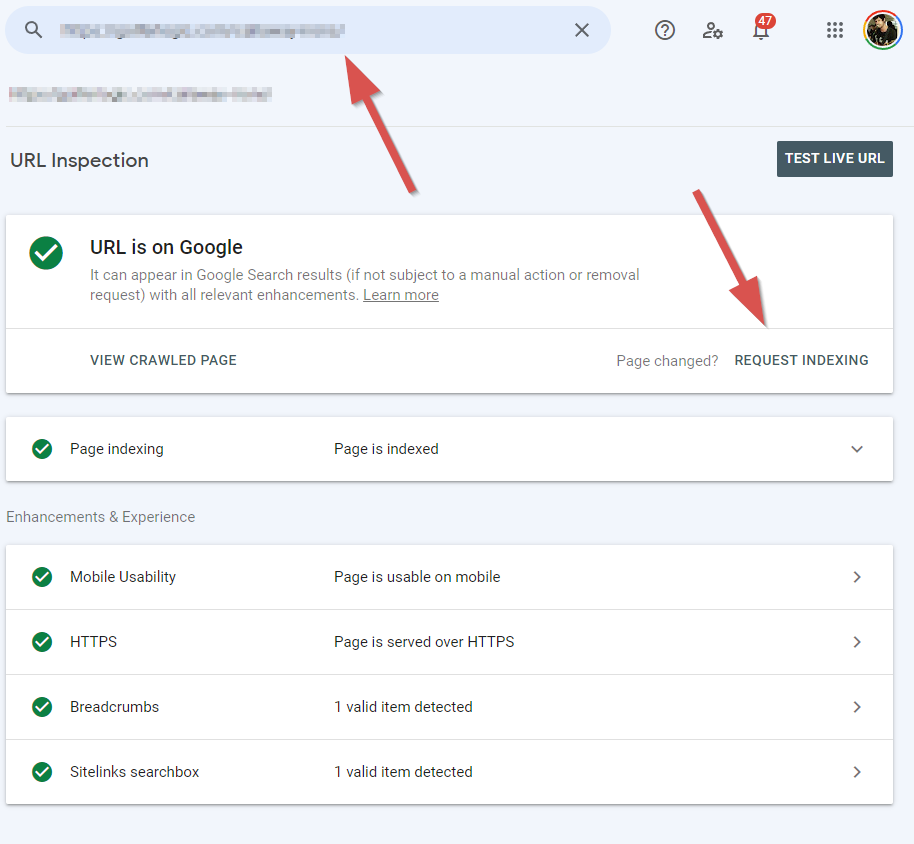An Easy Seasonal SEO Strategy to Supercharge Your SERP Results
An Easy Seasonal SEO Strategy to Supercharge Your SERP Results
Almost each Digital Marketing agency and SEO company in Liverpool would tell you that there are no ‘quick wins’ in search engine optimisation, but that's not exactly true. Certainly for SEO to be effective it does involve some aforethought and in-depth planning - and you definitely shouldn’t ignore those forward-thinking tasks.
I should advise you upfront though, that my title for this article is intentionally misleading to appeal to those who do seasonal SEO too - but I want to share a tactic as widely as I can that web-aviso believes can be one of the most powerful from an SEO standpoint, and that many businesses are overlooking ...
Firstly, there is no doubt that a seasonal SEO strategy can be a powerful way to boost your website's search engine results page (SERP) rankings during specific times of the year when search interest is high for certain topics or products - but why do businesses often only take the seasonal approach ?
Well, because some business products and services are seasonal, and we rely on Google / AI tells us what people are searching for ... BUT why spend all your time on creating good content and then go on to try and reinvent the wheel the following season with another approach ?
At web-aviso we want to show our clients how to work smarter, not harder ...
So before we get into the our most effective strategy - here are some seasonal things you can do :
- Keyword Research:
- Content Creation:
- Blog Posts and Articles:
- Visual Content : Incorporate images, videos, infographics, and other visual content that resonate with the season and your target audience.
- Technical SEO : Ensure your website is mobile-friendly, loads quickly, and provides a seamless user experience across devices.Optimize meta titles, descriptions, and headers with seasonal keywords. Implement schema markup to enhance the visibility of your seasonal content in search results.
- Link Building : Reach out to relevant websites, bloggers, and influencers to secure backlinks to your seasonal content.
- Guest posting on industry-related websites can help you earn high-quality backlinks.
- Social Media and Promotion:
- Promote your seasonal content on social media platforms to increase engagement, shares, and traffic.
- Email Marketing : Consider running targeted paid advertising campaigns on social media to amplify your reach.Send out newsletters featuring your seasonal content to your email subscribers.Offer exclusive promotions or discounts related to the season to incentivize engagement.
- User Engagement and Experience : Create interactive elements such as quizzes, polls, or contests related to the season to engage users and encourage sharing. Monitor user engagement and respond to comments and feedback promptly.
- Monitor and Analyze : Continuously monitor the performance of your seasonal content using analytics tools. Track keyword rankings, traffic, conversion rates, and other relevant metrics.Use the data to refine your strategy for future seasonal campaigns.
- Plan Ahead : Create a content calendar that outlines your seasonal campaigns and key dates well in advance. This will allow you to prepare and execute your strategy effectively.
Remember that SEO is an ongoing process, and it's important to adapt your strategy based on the latest trends, algorithm updates, and user behavior. By implementing a well-rounded seasonal SEO strategy, you can supercharge your website's SERP results and capitalize on peak search interest during specific times of the year ....
BUT there's one thing missing from this list that can be done anytime - and is a a great SEO tactic that is much more likely to yield results in the SHORT term. ...
- Refresh Existing Content ! - Update existing evergreen content with seasonal information, keywords, and images to make it relevant and fresh for the current season. (Especially if you have put some good time and effort into getting that page ranking well that page is ranking well anyway!)
Here’s an example where a landing page for a profitable keyword saw a 600% boost in organic traffic within a week.

So In this guide, we’re going to show you exactly how to put a content refresh plan into action.
But first, a recent word of caution from Google, and a note on what a content refresh is not -
A content refresh is NOT just changing dates (e.g., dont just update a page from, 'Best Walking Equipment 2026 to Best Walking Equipment 2027 !)
Google is a bit of a propaganda machine. We’re advocates of ethical organic and local SEO here at web-aviso and we’d never advise you to go against their guidelines. But there’s no doubt that many SEO tactics shouldn’t work now, but still do — even if prominent Googlers say otherwise.
So, a proper content refresh should mean a reasonably significant change to your content.
How much should your content change in a refresh? [data from 4 sites]
We pulled text from the current, and 2 previous year’s versions of a buying guide for 4K TVs from the following sites:
- Wirecutter
- Tom’s Guide
- Tech Radar
- What Hi-Fi
And then compared the 2022 v 2023, and 2021 v 2023 versions to get a percentage of matching phrases/words. We grabbed the old versions of the articles from archive.org.
Here’s what we got.

Conclusions
- The biggest change from 2022-2023 was Wirecutter, who have updated more than 75% of their guide.
- Tech Radar had the smallest year-on-year change in 2023, with just 20% of the text changing from last year’s version.
- What Hi-Fi updated 31% of their guide this year, but between the 2021 and 2023 versions, only 3% of text remains the same.
- All sites have updated more than 50% of the text in their guide between 2021 and 2023.
So ...
- For an incremental, yearly content refresh (i.e. 2026-2027), aim to update between 20 and 30% of your content at a minimum.
- You’ll probably want to conduct a bigger overhaul of your content every second year (i.e. 2029 vs 2029). We recommend around 50% of the text should change to be sure it will be considered ‘fresh’.
BUT WHAT ABOUT SERVICE PAGES ? -
The example above is from 4 big review sites, and our comments are conclusions and recommendations that are from the perspective of ‘guide’ or ‘blog’ style content - but what about service pages? Surely you don’t want to be rewriting them every other year?
No - But you do want to be adding to them/improving them over time.
We’d call that a content update, rather than a content refresh. Let’s define this.
- Update – a small, incremental change to a
page’s content. Perhaps the addition of some new data, a new service, a
new conclusion, or a small change to text. The vast majority of the
previous content remains the same.
- Refresh – a larger change to a page’s content. The new content differs significantly from its previous version and may justify a change to the publish title date (if .
However…It’s not 100% black and white - Because over time, a number of separate, small ‘content updates’ can add up, resulting in a page being significantly different from the original published version. At that point, a change of date may be justified - but you would hope that Google do cache those changes in your search results..
How to implement a content refresh strategy
So now we know:
- what a content refresh is,
- what it’s not,
- and have some data on how much of our content we should be looking to update (if we’re going to follow the example set by the big boys).
Let’s dive into the process of implementing a content refresh strategy.
1: Identify priority content that’s ripe for a refresh
Refreshing content takes time - and time is money.
A content refresh campaign will have one of two specific goals:
- Protect (or ideally, improve) the rankings of a high-performing piece of content, or
- Reverse the momentum of a declining page
So you’ll want to identify pages that fit (at least) one of the above criteria. But it’s possible that a page could fit into both
criteria. For example one of your top-performing pages might have dipped
a few spots over time.
Ultimately though you need to try to protect the rankings of any high performing webpages you have. Which means you need to ensure they remain relevant and fresh.
Fortunately, top pages are easy to identify using either Google Search Console or Analytics.
Your competitors know which pages are driving traffic to your site. And they’ll want to steal that traffic for themselves. Which means they’ll be going all out to one-up your content.
So why not beat them to it - Worst case scenario? You can always roll back to a previous version, figure out what went wrong, and try again. But in our experience, a well-executed content refresh is unlikely to have a negative impact on a page.
So how do you find declining pages?
There are two options. You can look at:
- Ranking positions, or
- Traffic.
Both work. But rankings are a little more precise, since traffic could be impacted by changes to a Google search result page.
For instance:
Google might be displaying more ads for a search result. Or perhaps they added a news box, pushing your organic listing further down the page. They have a horrible tendency to do that sort of thing… For traffic, again you can use either Search Console or Analytics. In Analytics, comparing traffic for a page year over year (in the landing page report) is a good place to start. You can also compare traffic year over year in Search Console. If you need more accurate numbers, stick with Analytics.
2: Work out a content refresh plan for each page
Now you’ve identified the pages on your site which require a refresh - the next step is to figure out how to refresh each page. And honestly, it’s going to vary site-to-site, and indeed, page-to-page. You’re going to have to get your SEO detective hat on and figure out exactly what Google wants for each page, and what you might be missing.
Think of it as a ‘what, why, and how’.
- (What) is the page that needs to be refreshed?
- (Why) is Google no longer rewarding the page?
- (How) will you refresh the page to improve the rankings and traffic?
Let’s look at some of the most common reasons why Google might have fallen out of love with your page.
Does your page match current search intent?
It’s always a good idea to start by looking at the current search results for your page’s main keyword. These are the pages Google is rewarding with good search positioning. So it’s safe to say that they like what they see. So the first thing you’ll want to work out is if your page matches the current search intent for the query.
Over time, Google figures out that most people searching for x (the query), want to see results like y (the topic and type of information, or content format) - that is to say that (in simplistic terms) that the searcher usually wants to - know about something - go somewhere - do something - or buy something and are looking for either specific or related information about that search. Of ocurse this is not black and white - but is an excellent place to start.
- you need to decide if your page matches the current search intent behind the query
- and if it doesn’t, how can you update it so that it does?
Note: there may actually be times when Google’s decision on the search intent behind a keyword has changed so much that it’s not worth your while trying to adapt your page to fit. In these cases you’d be better to refocus your content on a more specific (or long-tail) query.
As a note re creating lists - searchers now want a short list of easily digestible tips, rather than a long list that tries to be “complete”- so limit this to we would say 20 maxiumum per guide. So it’s also an example where, in some content refreshes, you might want to cut back, rather than add. If Google wants shorter content, give them shorter content. Don’t fight the machine.BUT - there is a “probably” caveat ... Sometimes, and only sometimes, it’s worth trying to go against the grain. Particularly if you’re not seeing any improvement after an initial content refresh. If everyone is creating short lists, then crank out a huge one to give Google something to think about. The algorithm is constantly experimenting, so it might give your longer-form content a chance. And if it performs better, then guess what? You win.
Is the information on your page up-to-date?
This is one of the easiest issues to tackle in a content refresh. Because, over time, there’s a good chance that your content (or at least sections of it) will become outdated. If you have a product review site, there might be newer, better products out.If you run a law firm, then certain laws or regulations related to your service might have changed. And if you write about SEO like we do, Google’s probably done something irritating since you published your piece that totally negates everything you said… you get the idea. .
It’s important to keep the information on your page up-to-date and relevant.
This means changing anything that needs changing. But it might also mean adding to your existing content. Because Google’s job (aside from collecting ad revenue) is to serve results that are the current best fit for any given query. And outdated or incomplete information is certainly not going to fit the bill.
Is your page “complete” and is it the best it can be?
When someone asks me “how do I rank number 1 for x?”, I always answer them with a question: “Does your page deserve to rank number 1 for x?” It’s true that Google is far from perfect. And strong backlinks still have a big influence on rankings. But generally, the cream will rise to the top. Besides, picking up backlinks is going to be much easier when you have genuinely great content (or a service) that’s objectively better than your competitors.
So in this part of the content refresh process, you’re going to return to the search results for your target keyword once again. And this time you’re going to click through the top ranking pages and look for anything they have that you don’t. This might be information. But it could also be different ways of presenting their content. Maybe they include videos, infographics, or other media? Or perhaps it’s just beautifully formatted and easy to digest.
Take notes. You’ll quickly gather a number of ideas for ways to refresh and add to your content to improve it. The goal - Make your page the absolute best result for your target keyword ...
AND - while we’re making our page the finest on the planet for its target keyword can we squeeze out some additional SEO value? Absolutely - this is where some good keyword research skills come in - Read our Guide here : Understand SEO Competitor Analysis
and How to Take Advantage of It - When combined with manual analysis of competing pages, we’re going to
end up with a ton of ideas for ways to improve our content - and ensure we can answer an emphatic “yes!” to the question of whether our page deserves to rank number 1!
3: Update your page (or pages)
If you’ve followed the tips above, you’ll now know exactly how to refresh your page to improve its rankings.
To recap, you going to:
- Make sure you’re matching current search intent
- If Google prefers a specific format (i.e. listicles) ensure your content is presented that way
- Make sure all the information on your page is up to date
- Add anything you’re missing to make your page the best on the web for its target keyword
So now it’s time to work on the page…then hit the update button. And as we mentioned previously, if it’s a significant refresh, you can justify changing the publish date (to current) when you update - then once you’re done, we’d recommend requesting a recrawl of the page in Search Console to speed up the reindexing process.
Search Console > Inspect any URL in “your domain” > Enter URL > Request indexing

4: Monitor the impact of your content refresh on search traffic and rankings
Page updated. Content refreshed. So what’s next? Well, hopefully a quick bump in traffic. But we’d advise closely monitoring a page’s performance over the first few weeks post refresh.
Here’s what to look out for:
- Impact on traffic (has it increased?)
- Impact on rankings (have they improved?)
- Impact on user experience (bounce rate, session duration etc)
For traffic, an increase will be easy to spot in Google Analytics. However, if you don’t notice an obvious improvement within a couple of weeks, it’s worth checking impressions in Search Console to see if they are increasing.
Search Console > Performance > Search Results > Pages > Select Page > Impressions

If they are, it’s safe to assume that Google liked your changes and additional clicks should soon follow.
What if your results metrics are declining after a refresh?
Well - DON’T PANIC. Sometimes it can take a little longer for changes to take effect. So we’d recommend waiting at least a month before considering updating your page again. Although d, if your metrics have gone backwards it might be worth taking action sooner. Either way, if you do decide that a content refresh has caused your site to slip, then you’ve got two options:
- Roll back the changes or
- Take a critical look at the updated page, figure out what Google doesn’t like, then refresh it again
We’d suggest trying the second approach first. But if your page is important to your business then sometimes a roll back is the best option. But a well executed content refresh is highly unlikely to negatively impact your rankings/traffic.
BONUS STEP - use the refresh as an opportunity to repromote your content
Want to get even more out of your content refresh? Use it as an opportunity to repromote your page.A burst of social media promotion can bring new eyes to your site. And a round of outreach can bring fresh backlinks to the updated page. And when you combine a content refresh with new backlinks… …you’ve got the recipe for a page that’s going to shoot up the rankings.
Ready to start refreshing your content?
Refreshing content truly is one of the quickest wins in SEO. Time-and-time again, I’ve seen an updated page immediately improve in both rankings and traffic.
It’s not rocket science - But it can be super powerful (and don't just make it about the seasons!)
We understand that your business will fully get the benefits that this may achieve - but simply has to choose between business and website -
or maybe you need a collaborative partner …
If
you would like to discover more about
how web-aviso can help transform your business presence:
📞 07767 343152
✉️ marketing@web-aviso.com
🌐 https://www.web-aviso.com
.





Comments
Post a Comment